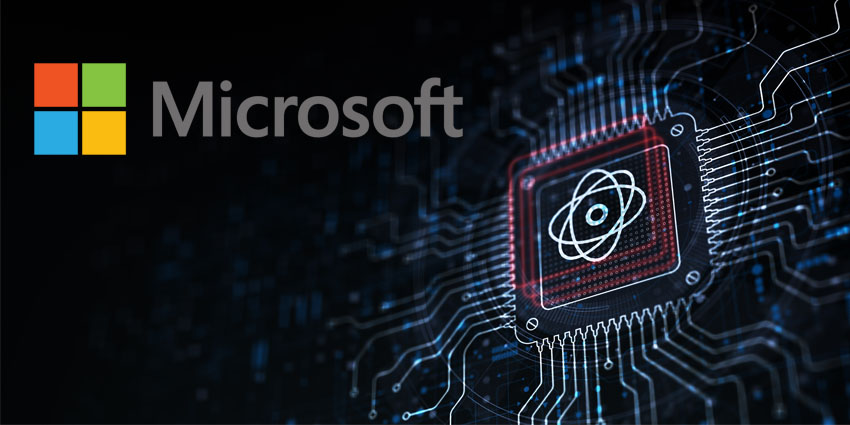In a Microsoft Build understandably dominated by the transformative viability of AI agents in the business world, nestled among all the agent-oriented announcements was one with quiet, earth-shattering potential for the future of cybersecurity for organisations: the launch of post-quantum cryptography (PQC) algorithms.
PQC refers to encryption methods designed to withstand attacks from quantum computers. Traditional cryptographic algorithms, which are essential to modern business communications and collaboration, as well as data storage and financial transactions, can be easily broken by quantum machines. As a consequence, these next-gen protocols Microsoft is offering aim to secure data and comms in a future where quantum computing is mainstream to ensure long-term privacy and protection across IT and UC systems.
Although PQC capabilities will only be available in preview for select customers and their developer teams for now, this update might represent the spark that lights the fire of the future of UC and collaboration cybersecurity resilience as bad actors become ever more sophisticated, and the technology needed to combat them needs to become ever more revolutionary.
- Microsoft to Block Screen Capture During Teams Meetings: What Will This Mean for IT Leaders?
- How Might Quantum Computing Revolutionize UC and Collaboration?
What Exactly are Quantum Computing and Post-Quantum Cryptography?
Quantum computing is all set to shake up the tech world, and IT leaders need to be ready. Instead of using bits that flip between 0 and 1 like today’s computers, quantum machines use qubits, which can hold multiple states at once thanks to a property called superposition. Even more powerful is entanglement, where qubits become linked in ways that let them solve problems together, no matter how far apart they are.
What does that mean in real terms? Quantum computers can crunch through incredibly elaborate calculations at speeds that make classical computers look sluggish. That opens doors to breakthroughs in everything from drug discovery to logistics.
But there’s a terrifying catch. Quantum computing could blow traditional encryption wide open, which is a colossal red flag for IT and UC leaders. The security systems we rely on today won’t hold up in a post-quantum world. As this tech matures, we must rethink how we protect data and ensure secure collaboration across networks.
Enter PQC.
PQC is the development of cryptographic algorithms that can resist the gargantuan processing power of quantum computers. Traditional encryption methods rely on mathematical problems, such as factoring large numbers, that are hard for classical computers to solve but remarkably easy for quantum machines.
PQC takes a different approach, using hard problems from areas like lattice-based cryptography, hash functions, and error-correcting codes. These are problems that are believed to be resistant to both classical and quantum attacks. These algorithms are designed to secure communications, data, and authentication protocols in a future-proof, quantum-resilient capacity.
How Might Post-Quantum Cryptography Shape the Future of Your Company’s Communications and Collaboration?
PQC will inevitably play a critical role in safeguarding the future of UC and collaboration platforms.
These systems rely heavily on encryption to protect real-time messaging, voice and video calls, file sharing, and user authentication, and their vendors are already considering how they might secure their platforms in a post-quantum world. For example, last year Zoom became the first UCaaS company to introduce post-quantum end-to-end encryption to Zoom Meetings within its Workplace platform.
But what can IT and UC leaders do themselves to get ahead of the curve? Realistically, not much for now, but staying vigilant about which vendors or other businesses are developing PQC functionality. This means proactively upgrading systems to support quantum-safe protocols when they become commercially available, ideally long before the threat fully materialises.
Naturally, this includes keeping an eye on the future general rollout of Microsoft’s PQC capabilities if your organisation has developers to work with the algorithms or closely monitoring which vendors will have PQC features more natively built into their platforms.
From securing internal collaboration tools to protecting customer-facing contact centres, PQC will become foundational to communication infrastructure, reinforcing resilience against the threat of bad actor attacks and data leaks. The shift naturally won’t happen overnight, but those who prepare early will have the upper hand.
What Exactly is Microsoft’s Solution in Its Current Form
While the tangible value of PQC might not be clear to most organisations for some time, given that quantum computing and its applications aren’t properly front and centre in the mainstream yet, Microsoft launching PQC features in preview allows IT and UC leaders to experiment with quantum-safe security in real-world environments
These PQC tools are available for early testing for Windows Insiders, Build 27852 and higher, and SymCrypt-OpenSSL version 1.9.0 and higher. Two key algorithms, ML-KEM (for key exchange) and ML-DSA (for digital signatures), are now integrated into Microsoft’s SymCrypt library and accessible via Windows’ Cryptography API: Next-Generation (CNG). Linux users can access these capabilities through the SymCrypt-OpenSSL (SCOSSL) interface.
This early access is Microsoft’s first step in helping customers prepare for the “harvest now, decrypt later” threat posed by future quantum computers, reinforcing digital trust as we move into the quantum era.







